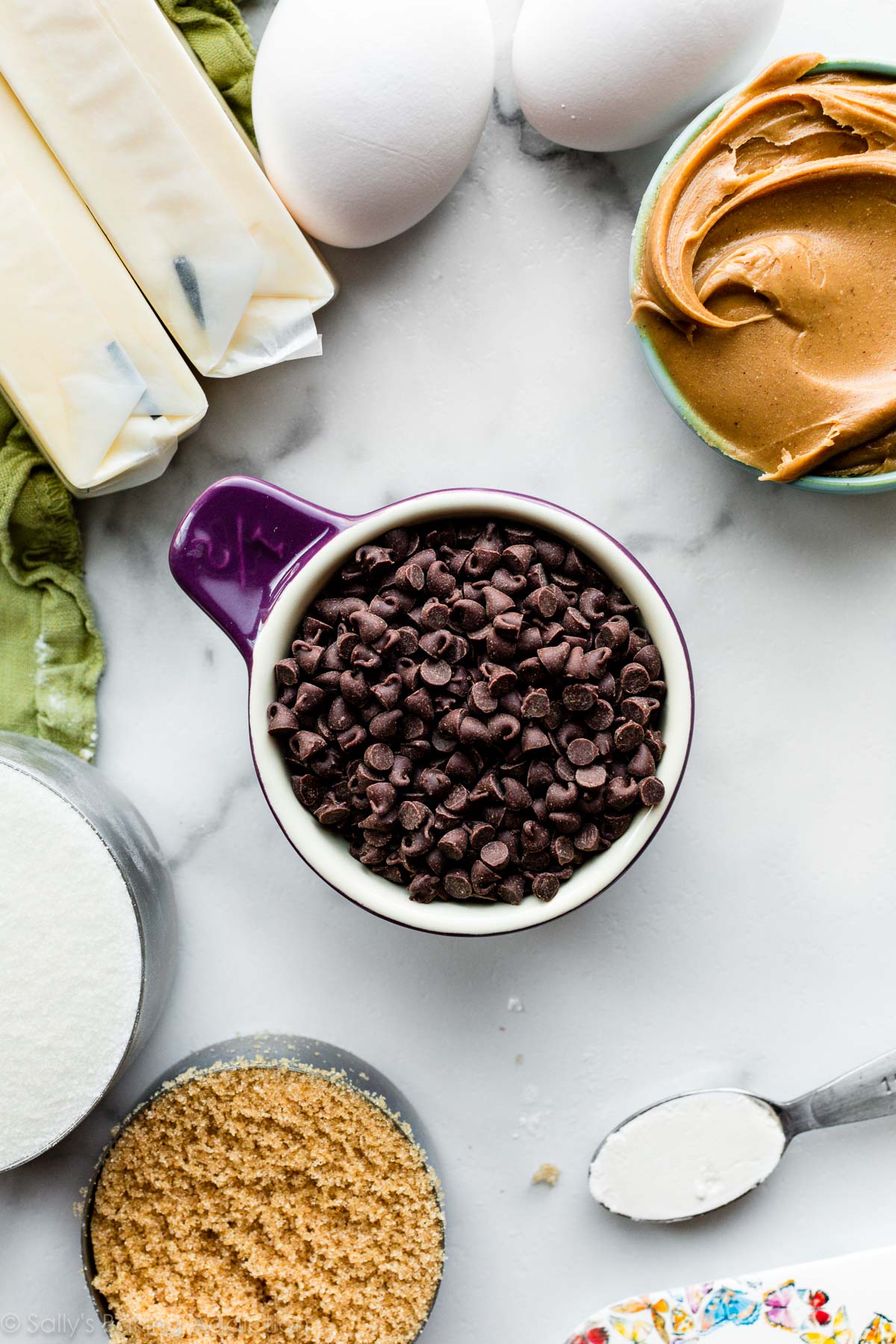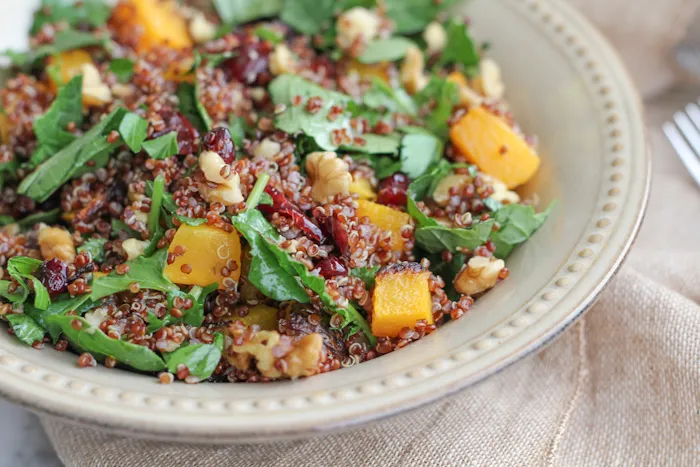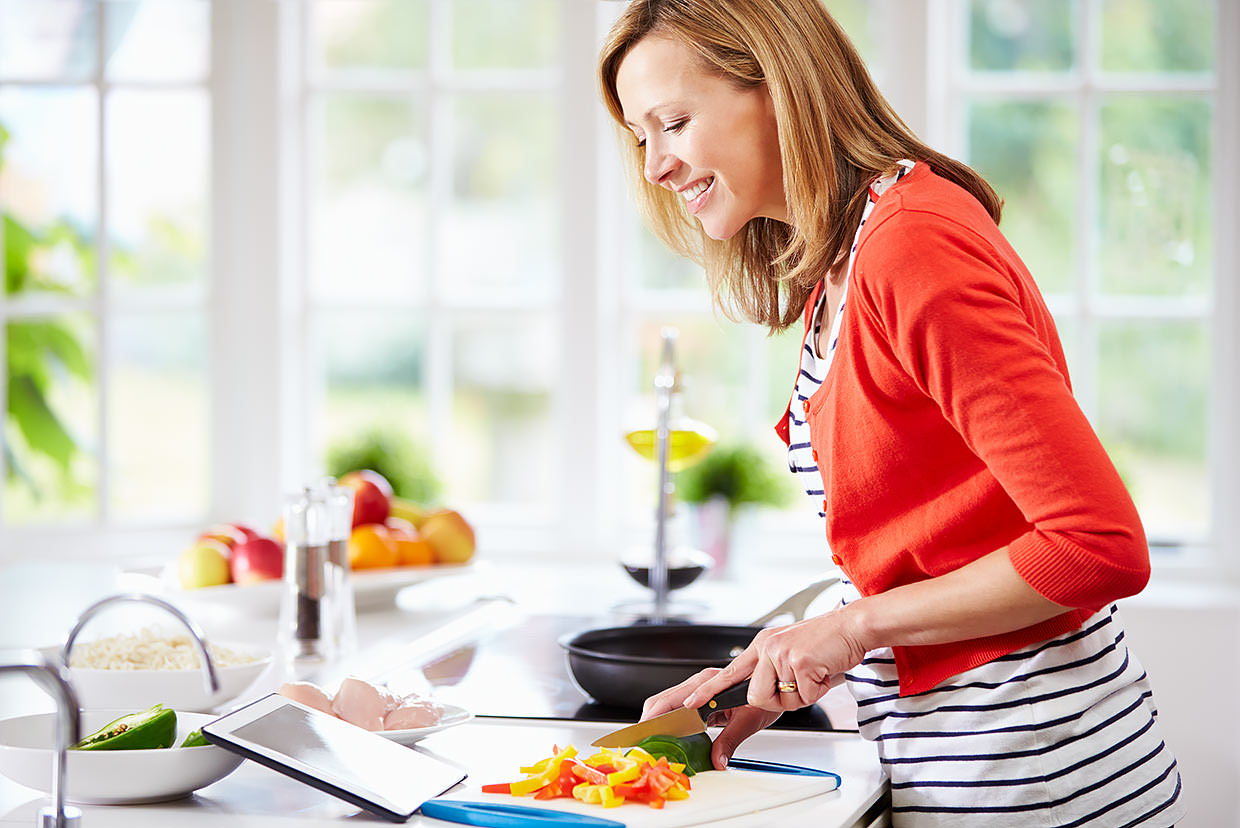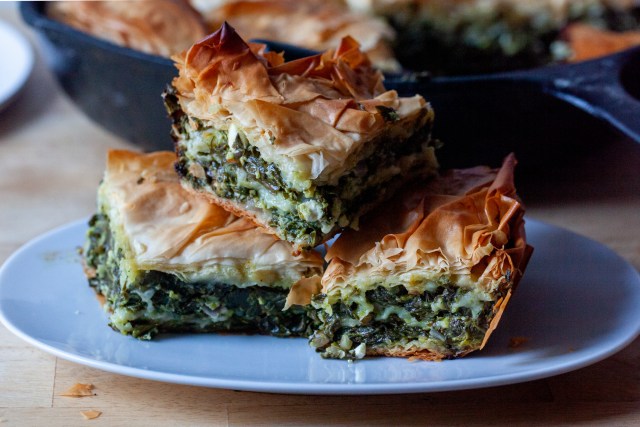Superfoods that are popular are often high in carbs, even if they are healthy and…

How to Properly Measure Baking Ingredients
With a video tutorial and in-depth explanations, learn how to properly measure baking ingredients and why measuring is so crucial in baking.
With every recipe I publish, my goal is to help you become a more confident baker. Baking from scratch doesn’t have to be difficult. If you’re set up with the right resources and tools, you can put the FUN back into your kitchen.
Today we’re focusing on something that may seem trivial to you, but it’s the most important step in every recipe you bake. Measuring ingredients properly is imperative. You see, baking is not very forgiving. It’s a science and estimating measurements could spell disaster. While you can easily get away with a handful of this or that when you’re cooking dinner, even the slightest baking miscalculation could turn your soft chocolate chip cookies into rocks. Understanding the correct measuring technique for a particular ingredient will guarantee better baking results. Because the difference between a recipe success and a recipe failure could lie within 1 mis-measured ingredient.
When it comes to baking, it pays off to be a perfectionist. Learn how to properly measure baking ingredients so your next recipe is a success.
How to Properly Measure Baking Ingredients
Give the video right below this text a few seconds to load. It’s a faded horizontal image of me. Click on the play button in the center to play it. Make sure any ad blockers are temporarily paused on your browser.
FLOUR
Flour is the most common mis-measured ingredient. Whether you’re using bread flour, cake flour, all-purpose flour, or any other flours on the market, use the “spoon & level” method. Do not scoop the flour out of the container/bag with your measuring cup because you could end up with 50% more than you need. Rather, using a spoon, scoop the flour into the measuring cup. Do not pack the flour down and do not tap the measuring cup as both cause the flour to settle in the cup. After you’ve spooned the flour into the measuring cup, use the back of a knife to level off the top of the measuring cup.
- Drill this in your head: Spoon & level flour. Do not scoop flour.
- How do I measure sifted flour? If a recipe calls for “1 cup of flour, sifted” — measure the flour, then sift it. If a recipe calls for “1 cup of sifted flour” — sift the flour then measure. It all depends where the word “sifted” is in the ingredient wording. If “sifted” is before the ingredient name, sift before measuring. If “sifted” is after the ingredient name, sift after measuring.
My favorite containers for bulk storing ingredients are these tightly sealed flour keepers. (Affiliate link, I love them!) I own about 10 and recommend them to anyone who asks. I use them for my all-purpose flour, cake flour, bread flour, brown sugar, granulated sugar, and more. They hold 3.8 quarts, which is about one 5 lb bag of flour. I use a label maker to make labels for each– they’re placed on top.

OATS
Make sure you are using the correct type of oats that your recipe calls for. To measure oats, use the same spoon & level method that you use for flour.
Whole oats and quick oats are different and depend on the cut of the oat. I most often use old-fashioned whole rolled oats in recipes like granola, oatmeal bars, and oatmeal cookies. Quick oats are finely chopped whole oats that have a more powdery consistency. When a more powdery, fine oat is ideal in a recipe, I use quick oats. To avoid having two different types of oats on hand in my baking supplies, I make my own quick oats from whole oats. This is very easy: pulse whole oats in a blender or food processor about 5-10 times to break them up to reach the quick oat consistency.
BAKING POWDER & BAKING SODA
Baking powder and baking soda can settle down in their containers over time. Shake it up or give it a stir, then using a measuring spoon, lightly scoop out of the container. Use a knife (or the container if it has a leveler) to level it off.
Always remember the difference between baking powder and baking soda. Each expire after 6 months, though I find they begin losing strength after 3 months. Write the date on the box so you know when to replace.
DRY YEAST
Standard packets of yeast hold 2 and 1/4 teaspoons, which is 1/4 ounce. If your recipe calls for more or less than 1 standard packet of yeast (or if you are measuring out of a jar or container), measure yeast how you measure baking powder or baking soda.
- Dry yeast can be sold as active-dry or instant. I answer plenty of yeast FAQs, including the difference between yeasts, on my Baking with Yeast page.
- If a recipe calls for dry yeast and you only have cake yeast (aka fresh yeast), use this handy conversion chart.
WHITE GRANULATED SUGAR
Unlike flour, sugar is measured by scooping the measuring cup or spoon into the container/bag until it is overflowing, then leveling it off with the back of a knife. Sugar is heavier than flour, so it’s less likely to pack down into the measuring cup. It’s also more forgiving in recipes than other ingredients because the sweetness of a finished product depends on your tastebuds. However, it is always best to measure the ingredients exactly as the recipe states because sugar crystals are imperative to break down other ingredients. Sugar also aids in proper browning, texture, structure, and stabilization.
BROWN SUGAR
Measure brown sugar like you measure granulated sugar. Unless the recipe states otherwise, brown sugar should be packed into the measuring cup or measuring spoon. Light brown sugar is most common, while dark brown sugar has a slightly stronger molasses flavor. Unless the recipe states otherwise, you can use light brown sugar and dark brown sugar interchangeably.
CONFECTIONERS’ SUGAR (Powdered Sugar/Icing Sugar)
Measure confectioners’ sugar using the same spoon & level method as flour, explained above. Sift confectioners’ sugar if the recipe calls for it. If your confectioners’ sugar is extra lumpy though, it’s best practice to sift it anyway. (No one wants pockets of powdered sugar in their otherwise smooth whipped cream!) As detailed above in the Flour section, 1 cup confectioners’ sugar, sifted means that the sugar is sifted after measuring and 1 cup sifted confectioners’ sugar means that the sugar is sifted before measuring.
COCOA POWDER
Whether you’re using natural or dutched cocoa, measure cocoa powder using the same spoon & level method as flour and confectioners’ sugar. Like confectioners’ sugar, cocoa powder can clump up. If a recipe calls for sifting it, make sure you take the time to do so.

LIQUID SWEETENERS
Liquid sweeteners include maple syrup, molasses, honey, corn syrup, agave, etc. Measure these thick and sticky liquids in dry measuring cups.
- A handy tip: To easily measure sticky sweeteners, spray the inside of the measuring cup lightly with nonstick spray. This will make it much easier to get the sweetener out of the cup!
LIQUIDS
Liquids used in baking such as milk, water, oil, etc should be measured at eye level. Using a liquid measuring cup, pour the liquid into the cup. Then, bend down to make sure the liquid is EXACTLY at level with the measuring requirement of the recipe.
SEMI-LIQUIDS
The semi-liquids I’m referring to here are ingredients like sour cream, yogurt, peanut butter, applesauce, mashed banana, etc. Measure these semi-liquid ingredients in dry measuring cups. They are too thick to be accurately measured in liquid measuring cups. Spoon & level, like you do with sugar or flour, then use a rubber spatula to help release the ingredients into the mixing bowl.
- What about butter? Butter is usually sold in sticks, either 1/2 cup (8 Tablespoons) sticks or 1/4 cup (4 Tablespoons) sticks. This makes measuring very convenient– simply slice off however much you need in a recipe. If your butter isn’t in stick form, use a dry measuring cup to measure it. If a recipe calls for melted butter, measure the butter in its solid state, then melt it.
ADD-INS
The add-ins I’m referring to here are chocolate chips, chopped fruit, sprinkles, nuts, etc. Simply scoop or pour them into a dry measuring cup. These ingredients aren’t typically used to make up the structure of a baked good, so there’s no need to be as precise.

I find the following measurement equivalents helpful.
Dry Ingredient Equivalents:
- 1 Tablespoon = 3 teaspoons
- 1/8 cup = 2 Tablespoons
- 1/4 cup = 4 Tablespoons
- 1/3 cup = 5-1/3 Tablespoons
- 1/2 cup = 8 Tablespoons
- 2/3 cup = 10 and 2/3 Tablespoons
- 3/4 cup = 12 Tablespoons
- 1 cup = 16 Tablespoons
Liquid Ingredient Equivalents:
- 1 cup = 8 fluid ounces = 1/2 pint
- 2 cups = 16 fluid ounces = 1 pint
- 4 cups = 32 fluid ounces = 2 pints = 1 quart
- 8 cups = 64 fluid ounces = 4 pints
- 4 quarts = 128 fluid ounces = 1 gallon
Free Printable PDF: Sally’s Baking Addiction Measurement Equivalents
Use a Kitchen Scale to Measure
A cup isn’t always a cup, but a gram or ounce is always a gram or ounce. Metric weights, such as a gram or ounce, are most accurate. Cup measurements are standard where I live, so that is why I offer my recipes in both cup and metric measurements.
When I’m developing recipes for my website and books, I weigh the ingredients in my recipe testing. Some may say weighing ingredients is a waste of time, but if you want the most precise results, weighing your ingredients will help. No need to spoon & level ingredients if you’re weighing them, but if a recipe instructs you sift the ingredient, it’s still best to do so before or after weighing (depending which the recipe instructs).
- Here is (affiliate link) the food scale I own.
- Place your measuring cup on the scale, zero it out, then add your ingredient.
Though it’s best to use the weights given if the recipe supplies them, you can refer to the following list if needed. Different products and brands could have different weights, but this is what I usually measure common baking ingredients to be.
Free Printable PDF: Sally’s Baking Addiction Common Weight Conversions
Common Weights
- 1 cup all-purpose flour = 125 grams (4 1/2 ounces)
- 1 cup sifted all-purpose flour = 115 grams (4 ounces)
- 1 cup bread flour = 130 grams (4 1/2 ounces)
- 1 cup sifted bread flour = 121 grams (4 1/4 ounces)
- 1 cup cake flour = 115 grams (4 ounces)
- 1 cup sifted cake flour = 100 grams (3 1/2 ounces)
- 1 cup (packed) brown sugar = 200 grams (7 1/2 ounces)
- 1/2 cup butter = 1 stick = 115 grams (4 ounces)
- 1 cup chocolate chips = 180 grams (6 1/4 ounces)
- 1/2 cup natural unsweetened cocoa powder = 41 grams (1.6 ounces)
- 1 cup confectioners’ sugar = 120 grams (4 1/4 ounces)
- 1 cup sifted confectioners’ sugar = 115 grams (4 ounces)
- 1/4 cup cornstarch = 28 grams (1 ounce)
- 1 cup granulated sugar = 200 grams (7 1/2 ounces)
- 1 Tablespoon honey = 21 grams (3/4 ounce)
- 1/2 cup maple syrup = 156 grams (5 1/2 ounces)
- 1 cup milk = 227 grams (240ml; 8 ounces)
- 1/4 cup molasses = 85 grams (3 ounces)
- 1 cup oats = 80 grams (3 ounces)
- 1/2 cup peanut butter = 135 grams (4 3/4 ounces)
- 1 cup sour cream or yogurt = 227 grams (8 ounces)

Want to Learn More?
My Baking Tips section is growing!




